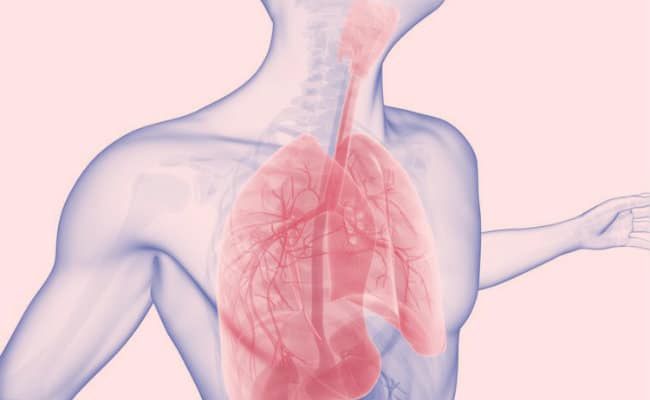The respiratory rate is called number of breaths an individual takes in a given period of time, it is usually quantified by minutes.
We have decided to collect all the information you deserve to know about this fundamental function of the body, so you can learn much more about the respiratory rate, how to measure it and some abnormal disorders that can occur.
What is the respiratory rate?
It is called yes to the number or amount of breaths that a person has per minute, it also refers to the number of breaths that a living being has in a certain period of time.
This frequency generates rhythmic movements, between breathing and expiration. Respiration is understood as the action of inhaling air through the nostrils, and expiration is the entire process of air travel in the body until the moment of exhalation.
A relatively normal respiratory rate should not present abnormalities such as agitation, fatigue and difficulty when inhaling or exhaling, this must be within the time frame established for a healthy rate.

It is usually expressed in intervals of exactly one minute, in which the being must have between 12 to 16 breaths.
This frequency is commanded by the nervous systemWhen it is affected by sleep problems, stress, fatigue, irritability and any other nervous condition, the person's breathing can suffer great imbalances, sometimes they become fatal if they are not controlled in time.
In the same order of ideas, the respiratory rate is a vital action to detect the vital signs of the person: this influences the treatments and medical controls or possible accidents.
Also, through this vital sign a psychologically stable person can be studied, sometimes, people are not aware of the fundamental role that this need plays in their lives, a psychologically stable person tends to pay attention to this type of subtlety , take care of your respiratory system as the most important thing in your life.
This means that people with an emotional intelligence much higher than that of the average citizen, can extend their life thanks to the care they give to their respiratory rate.
Characteristics according to age
In newborns, it can be 44 breaths per minute, this is due to the acclimatization that the baby has with the new breathing experience, directly related to the size of your lungs.
It also happens in children between 1 to 6 years old, their organs are still in the process of maturing and the respiratory rate tends to continue to be somewhat accelerated for their age: 18 to 36 breaths per minute.
For those in the pre-adolescent stage, they have between 20 to 30 breaths per minute, adolescents who range in age from 16 to 20 have between 18 to 26 breaths per minute.
The maturity of the lungs reaches adulthood, from the age of 30 approximately, where the respiratory rate can reach about 10 to 20 breaths per minute, at this stage of life the respiratory system already operates at a lower effort, for supposed addictive factors such as cigarettes can influence the proper functioning of breathing.
In the elderly, respiration varies between 15 to 28 breaths per minute, it all depends on how you lead your life and if you implement healthy habits.
How is the respiratory rate measured?
It must be measured in the rest periods of the person, to measure it manually, each breath must be counted together at the times the chest rises.
If it is measured with technological tools, it can be done with an optical sensor that measures the rate of respiration, This type of tool is usually used for patients who are under medical observation.
It is necessary to take into account that breathing can be affected on the days that the patient presents symptoms of fever, malaise and infection.

Abnormal frequency disorders
The person can be guided according to normal respiratory rate tables, that is, according to the age of the person, it is possible to estimate what their respiratory rate should be and what factors should be taken into account to make a more personalized study, such as, for example, some hereditary disease, the environment where it is and even any heart condition.
Tachypnea
Unlike hyperventilation and hyperpnea, it is the abnormal heart rate disorder that causes the person breathes faster and faster, It usually occurs in adults and the elderly, when they have a lung infection, stress or genetic factors.
This type of breathing is fast and deep, which is why it can sometimes be differentiated from hyperpnea, which is a fast breathing disorder but much shallower, therefore, less painful than tachypnea.
Some visible symptoms of this abnormal disorder can be dizziness, cloudy vision, and a tingling sensation in the body.
In pregnant women, in general, it usually occurs thanks to stress and the great amount of pain that the woman is subjected to.
In other instances, this condition can be a symptom of carbon monoxide poisoning, the respiratory system is forced to expel all harmful toxins from the body, so it accelerates the person's breathing to avoid serious cell damage and possible death.
Bradypnea
At the other extreme we have bradypnea, which is a very low respiratory rate, this can be much more deadly than tachypnea, since in extreme circumstances, it can be a symptom of the loss of vital signs of the person.
You can make a comparison between the table previously raised about normal respiratory rate according to the ages of the people and bradypnea, which in its appearance reduces the performance of the respiratory system twice.
Among the symptoms of this condition are: dizziness, fainting, nausea, severe chest pain and temporary loss of vision.
Other diseases like hypertension and hyperthyroidism can cause bradypnea, some heart disease, weakness in the heart tissues, either due to heart attacks or the age of the patient.
In all cases, it is extremely important that the person go to the specialist so that he or she can supply oxygen and can regulate the respiratory rate.
Recommendations to consider
It is important to emphasize that these recommendations are exposed to all audiences:
- Make sure you see your doctor often: do not wait for a symptom of an abnormal breathing rate to worry about your health. On the contrary, be responsible for your respiratory system and monitor your breathing on a monthly basis, which in the end will not take long.
- Avoid vices: Like cigarettes, tobacco and other lung pollutants, remember that breathing is vital to every being, and if you do not take care of it it can have serious long-term consequences.